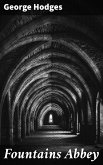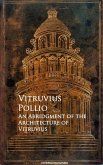The materials out of which this book is made were taken mainly from two sources: a description and explanation of the Abbey ruins by Mr. W. H. St. John Hope, and a collection and annotation of the Abbey records by Mr. John Richard Walbran. The ruins have been minutely examined by Mr. St. John Hope, who has left no stone unconsidered. He has brought to his study of the Abbey a profound knowledge of monastic architecture. The account of his investigations is published in the fifteenth volume of the "Yorkshire Archæological Journal," to which is appended a historical ground-plan of the Abbey, drawn by Mr. Harold Brakspear. The Marquess of Ripon has had copies of this plan framed and placed in various parts of the buildings for the information of visitors. Through the courtesy of Mr. Hope and Mr. Brakspear I am enabled to give a reduced version of this excellent plan. The records have been gathered together by Mr. Walbran, and printed, with many learned and interesting notes, in two volumes of the publications of the Surtees Society, entitled "Memorials of Fountains Abbey.{x}" They begin with a contemporary narrative of the foundation of the Abbey, and extend to the grant which the king made of the Abbey lands after the suppression. They include the chronicle of the administrations of the abbots; the deed of the ground on which the Abbey stands; a series of royal charters and a series of papal privileges; various records of the dealings of the Monastery with its neighbours, clerical and lay; letters to Thomas Cromwell from Layton and Legh, the commissioners at whose demand the Abbey was surrendered, and from Marmaduke Bradley, the abbot who surrendered it; and the king's assignment of pensions by name to the abbot and the monks after the dissolution. Of these documents, the longest and most interesting is the contemporary account of the foundation-Narratio de fundatione Fontanis Monasterii.
Dieser Download kann aus rechtlichen Gründen nur mit Rechnungsadresse in A, B, BG, CY, D, DK, EW, E, FIN, F, GR, H, IRL, I, LT, L, LR, M, NL, PL, P, R, S, SLO, SK ausgeliefert werden.









